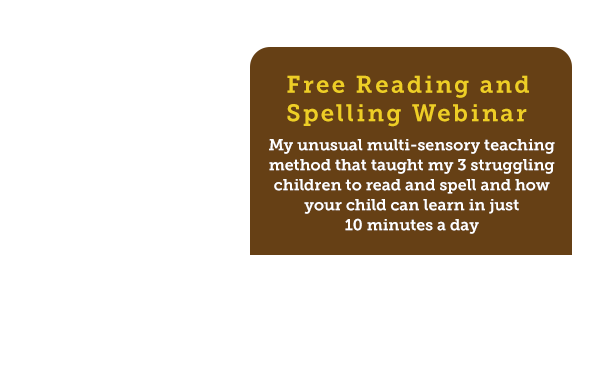“Go and sit on the thinking chair right now”.
This is a strategy that I used time and time again when I taught in the younger grades. Students who had become agitated, frustrated, angry, or physically abusive were directed to a small chair facing my desk.
I would give them approximately five minutes of thinking time, while I got the other students back on task. I would quietly tell the student sitting on the thinking chair that I wanted to know what was going on and why, and that I would be back to them soon for an explanation.
My aim was firstly to diffuse the situation by taking them and other students out of harms way and secondly to give them time to think about what had just happened and why.
As a teacher I learned very quickly to ask myself… not… What is that child doing, but why is that child doing it? The answers I got from students sitting on that chair over the years varied greatly but included;
 “My mom and dad moved all the furniture around in my house yesterday and I don’t like it.”
“My mom and dad moved all the furniture around in my house yesterday and I don’t like it.”
“Lauren keeps making grunting noises and touching all my stuff and it’s making me mad.”
“I’m tired. My baby sister won’t stop crying. She cries all night.
“My dad slaps my mum across the face all the time and I didn’t know it was wrong to slap Kate.”
I’m mad because my dad is an a@#%^hole. He’s left my mum for his girlfriend and they’re living in our beach house.”
“I hit him because he called me a black bast@#d.”
“I did it because I don’t know what I’m supposed to do. I can’t remember what you said.”
“I can’t do my work. I keep asking Mr Smith what to do, but he doesn’t explain it properly. I just don’t get it.”
Once you know the real reason for a child’s poor behaviour it is much easier to solve the problem.
Over the years I followed these three steps.
- Don’t become emotionally invested. (It’s exhausting and stressful.) The very least you should do is count to 10 in your head before you react.
- Take control of the environment and quickly stabilise the situation.
- Find out what just happened and why, so you can stop it from happening again.
Teenagers are much more complex.
Their motivation for poor behaviour can be more varied and the way it plays out in your classroom can be completely different and more confrontational, but essentially you employ the same technique.
An angry teen can fight us for control of our classroom, threaten our sense of authority and will fear looking weak in front of their peers. So the way you react in a moment of classroom madness is very important. Just as important as knowing the subject you are teaching, is the skill of staying calm, in control and knowing what strategies to employ to resolve a situation quickly. Here are some tips.
- Again – don’t become emotionally invested.
- Allow time for student’s emotions to settle.
- Communicate clearly to the student that you are willing to listen to their side of story.
- Acknowledge that there is a motive for the student’s behaviour without agreeing to a student’s suggestion of a solution on the spot.
- Do not get into an argument with a student.
- Use humour when appropriate.
- Stay in-control and find your own comfortable voice.
 Don’t…
Don’t…
- React on the spot.
- Embarrass or attack a student in front of their peers.
- Say or imply that there are no excuses for their bad behaviour.
- Ask students to repeat themselves in an accusatory manner.
- Criticise, lecture, scold or blame.
- Use sarcasm or be insincere.
Here are situations and examples of methods you can apply.
Scenario one
Student:Tells teacher to “F@#% off”
Teacher: “I am disappointed that you have used that language in my class. You must be feeling very angry. We need to find a better way for you to communicate this to me. Right now is not the time because I am very annoyed with you. We will talk later when we are both feeling calmer.”
 Scenario two
Scenario two
Two students begin name calling and then one hits another and it becomes heated.
Teacher: “You both have every right to defend yourself against verbal insults, but hitting is not acceptable. We all need to have a talk together to work out what is going on and why you are so annoyed with each other. For now, separate please and we will have a chat after class.”
Scenario three
Student:“I hate this subject.”
Teacher: “And yet here you are…. so I thank you for coming. Let’s find a way to make this class more enjoyable for you. No doubt you’ve got some good ideas. Let’s have a chat before the end of the class once people are working.”
Scenario four
Student: “You’re not the boss of me. I’m not doing that.”
Teacher: “That is a great refusal… remember that if your drunk mate wants you to get in their car. Let’s move on.”
Scenario five
Student: “I am not reading aloud in class.”
Teacher: “No problems Anthony, public speaking makes most people nervous. Let chat after class and maybe we can find a way to make you feel more comfortable next time you are asked.”
Children of all ages act out and misbehave in class when they are feeling upset and threatened and teachers are often on the receiving end. The children of today have all sorts of issues going on at home and in their lives. Teachers today are not just teachers; they are mentors, counsellors and confidantes. Ask students who their favourite teachers are and why and they will know the answer. Quite often it is all about respectful and constructive communication. Students know which teachers really care.




















That hits the target dead certne! Great answer!